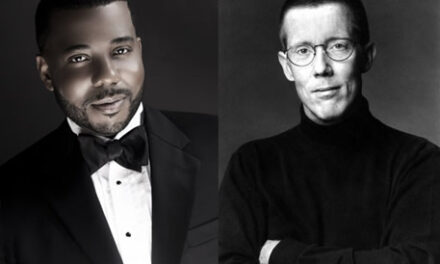The St. Matthias String Quartet delivered a relatively unchallenging but pleasant concert of eighteenth and nineteenth century quartets as one of the ongoing monthly concerts presented in century-old St. Matthias Episcopal Church, perched on a hilltop overlooking downtown Asheville.
One of the pleasures of chamber music is the intimacy that may be shared between audience and players. Whether the audience is composed of persons steeped in music or those taking a casual interest, whether the musicians are professional or amateur, and whether the venue is a concert hall or a church sanctuary, chamber music best conveys its message when the musicians are in close rapport with the auditors, as occurred during this concert. The audience of one hundred took great pleasure in a program that might be termed Viennese Chamber Music.
Another pleasure of chamber music is to mix the familiar with the unknown. Youthful quartets of Wolfgang Amadeus Mozart and Franz Schubert (two composers who died far too young) were programmed at this concert along with a late quartet from the long-lived but little-remembered Ignaz Lachner.
Mozart’s String Quartet in F, K.168, began the program. The players did not mesh well in the Allegro, perhaps because of adopting an unfortunately slow tempo that led to some desultory moments. But they improved in the Andante and Minuetto, and were fully convincing in the complex Fuga that is the final movement of this work by a 17-year-old genius.
Schubert’s String Quartet in E-flat, Op. 125/1 (D.87), came next. This is again a youthful work, despite the high opus number that represents the publication sequence. The first and last movements provided lyrical themes that demonstrated Schubert’s ability as a song writer and first violinist Brent Yingling’s ability to produce a singing tone. The quartet took the second movement Scherzo at a slow tempo, but their metronomic pulse convinced me that this was deliberate. Moderately paced but metronomic is better than fast but ragged in my book, so I will not complain.
Ignaz Lachner (1807-95) had a long career as Kapellmeister in Austria, Germany and Sweden, and composed profusely. Judging from the String Quartet in G, Op. 104, a late work which appeared on this program, Lachner never gave up his deep love for the classical style. He allowed others to move into and almost out of the Romantic period while he continued to create works that resembled those of Joseph Haydn with some new harmonic ideas grafted on. The work is of good humor, amuses with a third movement that quotes German popular songs, but is of severely limited complexity. Long after Beethoven showed how to combine counterpoint and complex harmony in four voices, Lachner continued to write far too often a theme for first violin with accompanying triads. The work is charming and worth hearing, but as the program notes by cellist Ron Lambe correctly described, it was a Viennese “dessert.”
*We are delighted to welcome Dr. McIrvine to the pages of CVNC. For his wide-ranging biography, please [see About Us].











